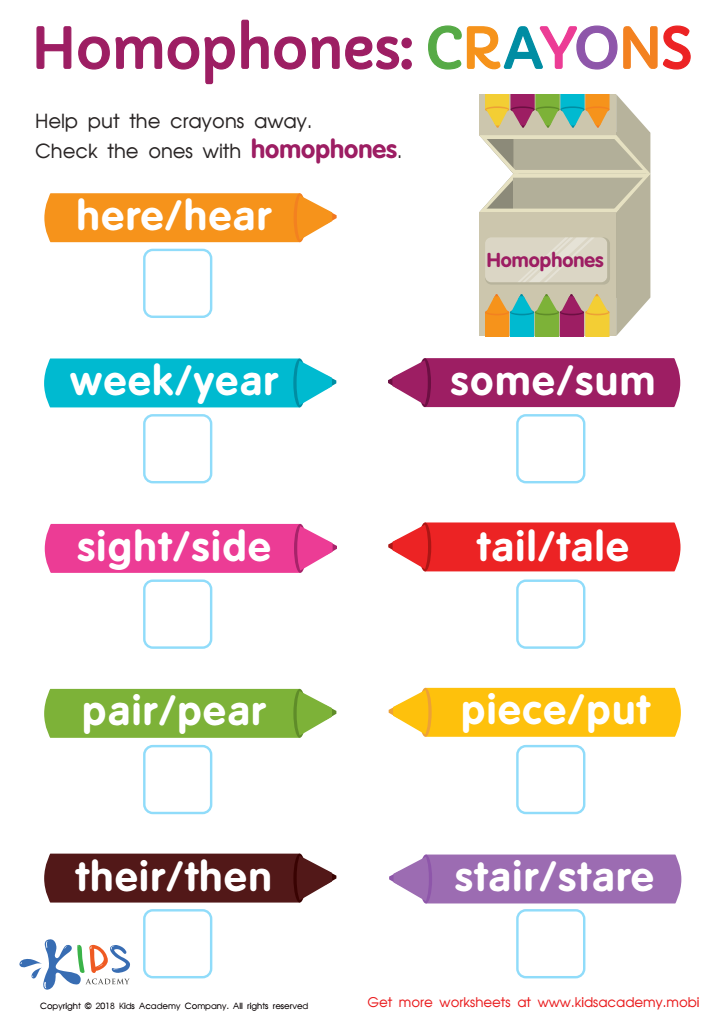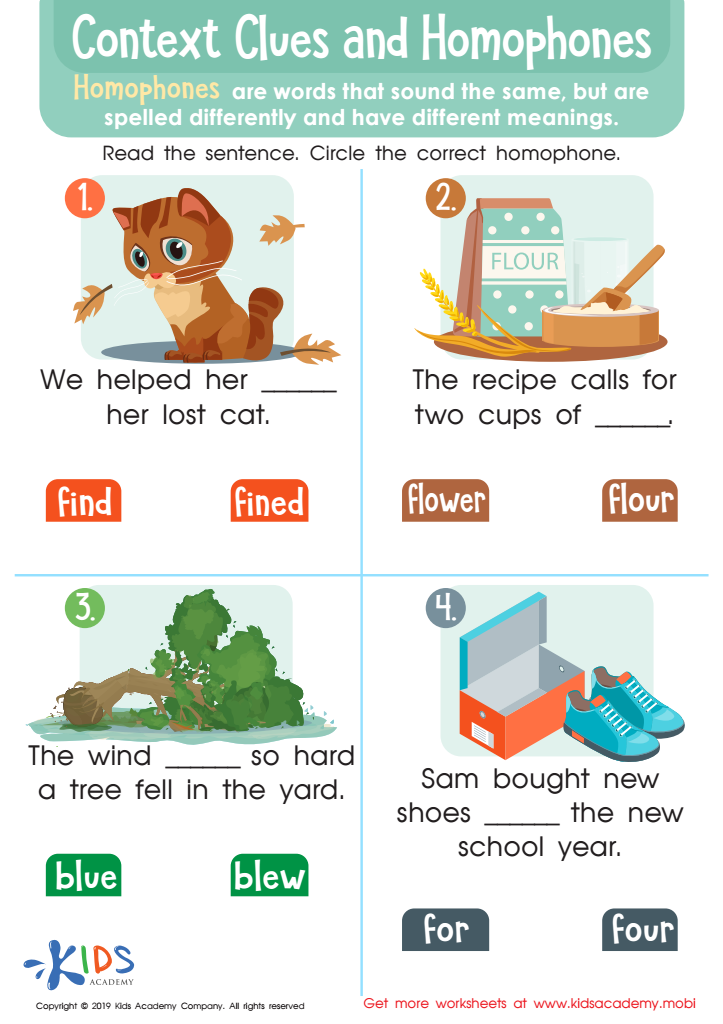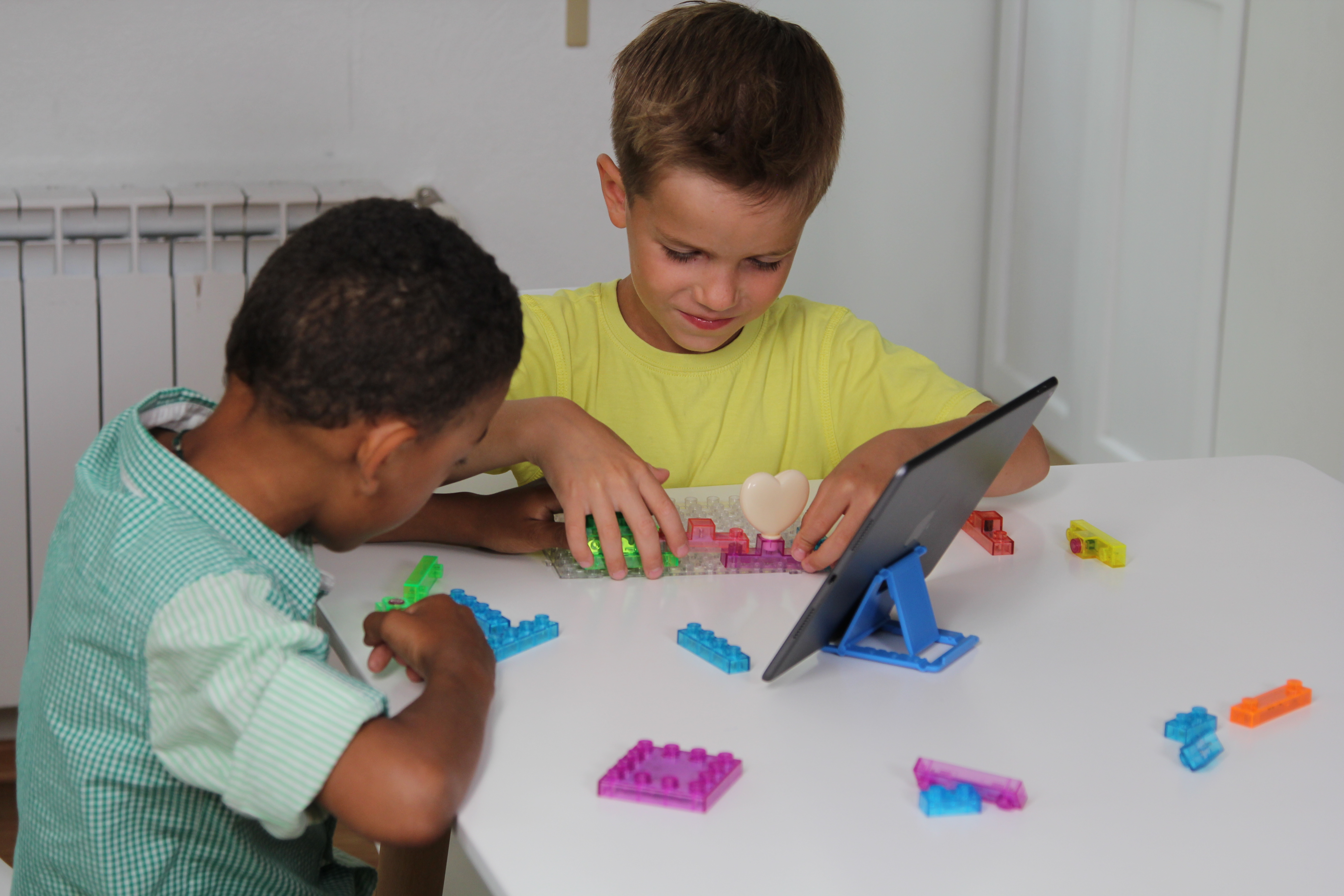Homophones understanding Worksheets for Kids
2 filtered results
-
From - To


Homophones: Crayons Worksheet


Context Clues and Homophones Worksheet
Question/Answer
What does the Homophones understanding skill mean when it comes to Grade 2 Reading Comprehension learning?
The Homophones understanding skill in Grade 2 Reading Comprehension involves recognizing and understanding words that sound alike but have different meanings and spellings. For example, knowing the difference between "to," "two," and "too." This skill helps students improve their reading comprehension and vocabulary by understanding context and the precise meaning of words within texts.
How does the mastery of the Homophones understanding skill affect a student's performance at an early age?
Mastery of homophones at an early age significantly enhances a student's reading, writing, and comprehension abilities. It helps in distinguishing between words that sound the same but have different meanings and spellings, leading to fewer mistakes and greater precision in language use. This foundational skill also boosts confidence in communication and academic performance across various subjects.
How to train the Homophones understanding skill in Grade 2 students learning about Reading Comprehension?
To train homophone understanding in Grade 2 students, introduce them to pairs of homophones with visual aids and use them in sentences to clarify their meanings. Incorporate fun activities like matching games, homophone bingo, and storytelling where students choose the correct homophone in context.
 Assign to the classroom
Assign to the classroom












